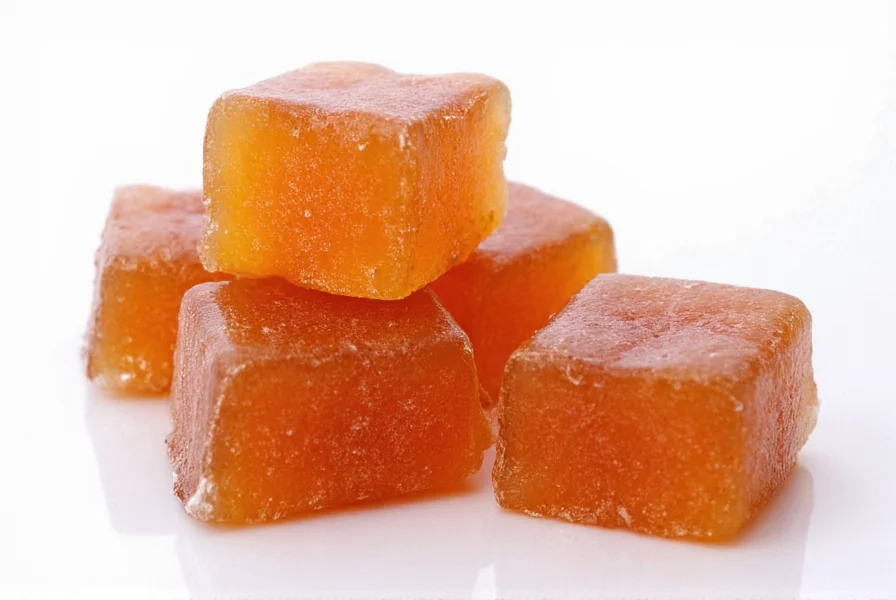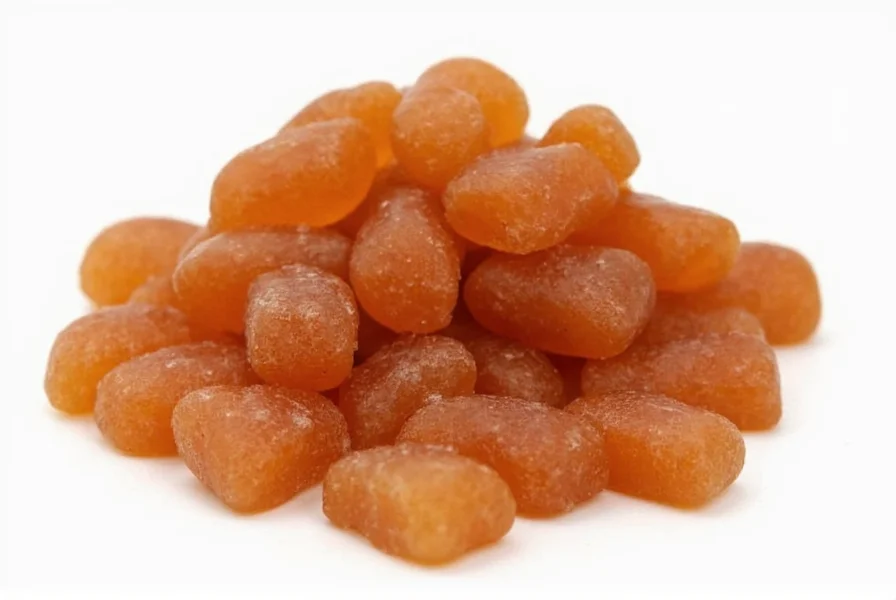For candy enthusiasts seeking authentic spicy-sweet experiences, cinnamon hard candy represents one of the most enduring confectionery traditions. Unlike soft caramels or chocolates, this boiled sugar creation maintains its firm structure while delivering a powerful cinnamon punch that gradually mellows as the candy dissolves. The distinctive reddish color and intense flavor profile make it instantly recognizable among candy varieties.
The Historical Roots of Cinnamon Hard Candy
Cinnamon hard candy traces its origins to 19th century Europe when sugar boiling techniques became accessible to confectioners. Early versions emerged in Germany and Scandinavia, where spice trading routes made cinnamon more readily available. By the late 1800s, American confectioners had adopted the recipe, creating the familiar red-hued candies sold in apothecaries and general stores.
Originally marketed as "cinnamon imperials" or "cinnamon imperials drops," these candies gained popularity for their long shelf life and medicinal properties. Cinnamon's natural antimicrobial qualities made these hard candies practical for travelers and soldiers who needed portable breath fresheners without refrigeration. The distinctive spicy kick also provided sensory stimulation during long journeys.
What Makes Cinnamon Hard Candy Unique
The magic of traditional cinnamon hard candy lies in its simple yet precise formulation. Unlike fruit-flavored hard candies that use artificial flavorings, authentic cinnamon varieties rely on either:
- Ceylon cinnamon (softer, sweeter profile)
- Cassia cinnamon (more intense, traditional spicy heat)
- Natural cinnamon oil extracts
The characteristic reddish color traditionally came from caramelization during the boiling process, though modern versions sometimes use natural colorants. The firm texture results from cooking the sugar syrup to the "hard crack" stage (300-310°F/149-154°C), creating a glass-like structure that slowly dissolves in the mouth.
| Ingredient | Purpose | Traditional Amount |
|---|---|---|
| Granulated sugar | Base structure | 2 cups |
| Corn syrup | Prevents crystallization | 2/3 cup |
| Water | Dissolves sugar | 2/3 cup |
| Cinnamon extract or oil | Flavoring | 1-2 tsp |
| Cream of tartar | Stabilizer | 1/4 tsp |
The Science Behind the Spicy-Sweet Experience
When exploring how cinnamon hard candy works, the chemistry is fascinating. As the candy dissolves, it releases cinnamaldehyde—the compound responsible for cinnamon's signature flavor and aroma. This gradual release creates the distinctive experience where the initial sweetness gives way to increasing spiciness before mellowing again.
Unlike artificial cinnamon flavors that can taste medicinal, high-quality cinnamon hard candy balances the natural heat of cinnamon with sufficient sugar to create a complex flavor journey. The hard texture ensures this process takes 15-20 minutes, making it one of the longest-lasting candy experiences available.
Homemade vs Commercial Cinnamon Hard Candy
For those interested in making cinnamon hard candy at home, the process requires careful temperature control but relatively simple ingredients. Home versions typically use natural cinnamon extracts and avoid artificial colors, resulting in lighter amber tones rather than the bright red of commercial varieties.
Commercial producers often add citric acid to enhance flavor perception and may use artificial coloring for consistent appearance. Some premium brands still use traditional copper kettles and natural cinnamon oils, preserving the authentic taste that candy connoisseurs seek when searching for the best cinnamon hard candy.
Storage and Shelf Life Considerations
Proper storage is essential for maintaining cinnamon hard candy freshness. Exposure to humidity causes these candies to become sticky and lose their characteristic crunch. For optimal longevity:
- Store in airtight containers with silica gel packets
- Keep away from direct sunlight and heat sources
- Consume within 6-12 months for best flavor
- Refrigeration is unnecessary and may introduce moisture
When stored properly, traditional cinnamon hard candy maintains its quality remarkably well, explaining its historical popularity as a travel-friendly treat. The low moisture content prevents bacterial growth, making it one of the most shelf-stable confectionery options available.
Cultural Significance Across Regions
Cinnamon hard candy holds special significance in various cultures. In Scandinavian countries, it's traditionally served during holiday celebrations. Mexican varieties often incorporate additional spices like clove and anise. In the American Midwest, these candies remain popular at county fairs and as nostalgic treats that evoke childhood memories.
The enduring appeal of traditional cinnamon hard candy demonstrates how simple confectionery techniques can create memorable sensory experiences that transcend generations. Whether enjoyed as a breath freshener, a soothing treat for sore throats, or simply as a flavorful indulgence, this candy maintains its place in confectionery history.

Frequently Asked Questions
What makes cinnamon hard candy different from other hard candies?
Cinnamon hard candy differs from fruit-flavored varieties through its use of natural cinnamon compounds that create a distinctive spicy-sweet profile. Unlike other hard candies that primarily deliver sweetness, cinnamon varieties produce a flavor progression where initial sweetness gives way to increasing heat before mellowing. The traditional reddish color and firmer texture also distinguish it from many fruit-flavored counterparts.
How long does homemade cinnamon hard candy last?
Properly stored homemade cinnamon hard candy typically maintains optimal quality for 6-8 months. When kept in an airtight container with moisture-absorbing packets in a cool, dark place, it can remain edible for up to 12 months. Commercial varieties often have longer shelf lives due to preservatives and controlled manufacturing environments, sometimes lasting 18-24 months while maintaining flavor integrity.
Why does cinnamon hard candy sometimes make my mouth feel hot?
The warming sensation from cinnamon hard candy comes from cinnamaldehyde, the primary compound in cinnamon. This substance activates TRPV1 receptors in your mouth—the same receptors that respond to capsaicin in chili peppers—creating a perception of heat. Unlike spicy foods where the heat diminishes quickly, the slow dissolution of hard candy prolongs this sensation, creating the characteristic warming effect that gradually intensifies then subsides.
Can cinnamon hard candy help with sore throats?
While not a medical treatment, cinnamon hard candy may provide temporary soothing relief for mild sore throats. Cinnamon contains natural antimicrobial compounds that can help reduce bacteria in the mouth, and the slow-dissolving nature of hard candy increases saliva production, which lubricates the throat. The warming sensation may also provide comforting relief, though it shouldn't replace proper medical care for persistent throat issues.
What's the difference between cinnamon hard candy and cinnamon imperials?
Cinnamon imperials are a specific type of cinnamon hard candy that originated in 19th century Europe. The term "imperials" referred to the candy's imperial (meaning "fit for an emperor") quality and flavor intensity. While all cinnamon imperials are cinnamon hard candies, not all cinnamon hard candies qualify as imperials. True imperials use higher concentrations of natural cinnamon oil and traditionally feature a more intense, complex flavor profile compared to standard cinnamon hard candies.











 浙公网安备
33010002000092号
浙公网安备
33010002000092号 浙B2-20120091-4
浙B2-20120091-4